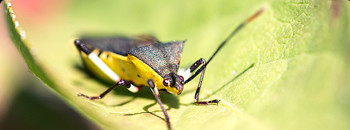Dr. John Stier, environmental turfgrass extension specialist, professor and chair of the Dept. of Horticulture-University of Wisconsin, Madison.
Spring time always gets people excited about their lawns. Store shelves are stocked with lawn care products and advertisements are on TV and in the Sunday paper for grasses, mowers, and fertilizers. Our lawns need three things to grow well: mowing, watering, and fertilizing.
Warm season grasses in the southern part of the United States often need some fertilizer as they begin to green up in the early spring while cool season grasses grown in the northern United States aren’t usually fertilized until about a month or so after mowing begins. This is because cool season grasses can take advantage of nitrogen naturally released from the soil.
Turfgrasses need more than a dozen nutrients to grow, most of which are plentiful in soil. The three nutrients which are most likely deficient in soils are nitrogen, phosphorus, and potassium, abbreviated as N-P-K on fertilizer labels. The three numbers on the fertilizer label represent the percentage of N, P, and K in the fertilizer formula. The numbers never add to 100 because the nutrients come in different forms which contain other elements. For example, the weight of urea is 46 percent from N, 29 percent oxygen, 19 percent carbon, and 6 percent hydrogen: the label will show 46-0-0 because it doesn’t contain P or K.
While N is the nutrient that lawns are usually missing, complete fertilizers contain N, P, and K. Take a soil test every three to five years to determine what nutrients your lawn is missing. Some turfgrasses, like centipede grass and tall fescue, may only need one or two lbs N per 1,000 square feet each year, while most other grasses will need more. Your university extension service will have guidelines for the grasses specific to your area.
Most fertilizers sold to homeowners contain a mixture of the two types of nitrogen, readily available and controlled release, because both types have different benefits. Readily available nitrogen gets into the plant fast while controlled release forms of nitrogen slowly release the N over many weeks. The usual rate of N is 1 pound per 1,000 square feet. Most fertilizer bags contain a recommended setting for different fertilizer spreaders to apply either a high rate or a low rate. The high rate will usually supply 1 pound N per 1,000 square feet, and the low rate will supply about 0.5 pound N per 1,000 square feet.
Also read and follow label instructions when applying fertilizer. Make sure to sweep up any fertilizer from pavement after application, and don’t apply directly to water. Fertilizer should not be applied when the soil is saturated or when a big rainstorm is expected. Fertilizer will work best when lightly watered after application.

